Some Plants of the Galapagos
My husband and I recently returned from a trip to the Galapagos Islands. The adventure was remarkable and fast paced. We are still mentally sorting out our experiences and memories. We treasure the opportunity we had to see so many different animals in their natural habitat. The most astounding thing to me was the fact that the animals were not afraid of us. Because of a lack of mammalian predators on the islands, we were able to wander among nursing sea lions and nesting booby and frigate birds without causing the animals any distress. The National Park rules do require we keep six feet away from the animals.
The naturalists took us by Zodiac, in groups of 12 to 16 to isolated beaches and islands. For the most part the islands we saw were arid. We were in the dry season and were usually visiting the leeward sides of the islands.
The main tree on many of the islands was Palo Santo, Bursera graveolen, also known as the Holy Tree. The branches have a wonderful scent when rubbed. The wood is burned as incense or turned into an essential oil. These trees are also found in Mexico, Central America, and South America. The trees were beautiful even in their leafless state, the white bark would catch the light at sunset and the whole tree would seem to glow. The leaves will return in the rainy season. The size of the tree varied from island to island and on some islands they were coated in a lichen or moss that the guides said acted as a sun protection.
We found Prickly Pear Cactus, Optunia on many islands. It has evolved into six endemic species in the Galapagos: Optunia echios, O. galapageia, O. helleri, O. insularis, O. axicola, and O. megasperma. It looks like the cactus we are familiar with, but stuck on top of a tree trunk. The tree trunk portion of the plant is taller on the islands that have giant Galapagos tortoises. The tortoises use them as a food source as do land iguanas, cactus finches, and mockingbirds.
Another plant we saw on several islands was the Poison Apple tree, Hippomane moncinella. Apparently all parts of the tree are poisonous to humans; the sap can cause skin irritation and ingestion of the apple like fruit can lead to death. The apples are a favorite food of the giant tortoises. This tree is native but not endemic.
The Lava Cactus, Brachycereus nesioticus, grows on lava flows and was one of the few plants we saw on Fernandina Island, the newest of the Galapagos Islands. Fernandina had its last eruption two weeks before we got there. The plant's colors really stand out against the forbidding, black, jumbled rocks. This plant is found only in the Galapagos and has extremely shallow roots.
On Isabela Island at Urbina Bay, we hiked inland on a plateau that had been uplifted from the sea bottom in 1953. There we encountered Galapagos Cotton, Gossypium darwinii. It is a relative of the Hibiscus and is the largest flower of any of the Galapagos endemic plants. The shrub can grow to three meters tall. Its seed splits open revealing fluffy cotton. Birds use this to line their nests.
On our last day in the islands we went to Punto Pitt on San Cristobal Island. We saw red footed boobies as well as a vivid red ground cover called Galapagos common carpet weed, Sesuvium portulocastrum. It is native but not endemic. It did remind me of a Persian carpet covering the windy bluff.
While our naturalists were encyclopedic regarding animal information, I found I had to ask about plant information. Although we were provided with check off mammal, invertebrate, reptile, and bird lists with common and scientific names, there were no plant lists. Once home I have used the Charles Darwin Foundation and the Galapagos Conservation Foundation websites to try and find scientific names and plant information.
Perhaps in another blog I can tell you about The Charles Darwin Research Station we visited. They are doing very interesting work and I found some interesting parallels to what we do. In the meantime, if you ever get a chance to go to the Galapagos, jump at it. You won't regret it.
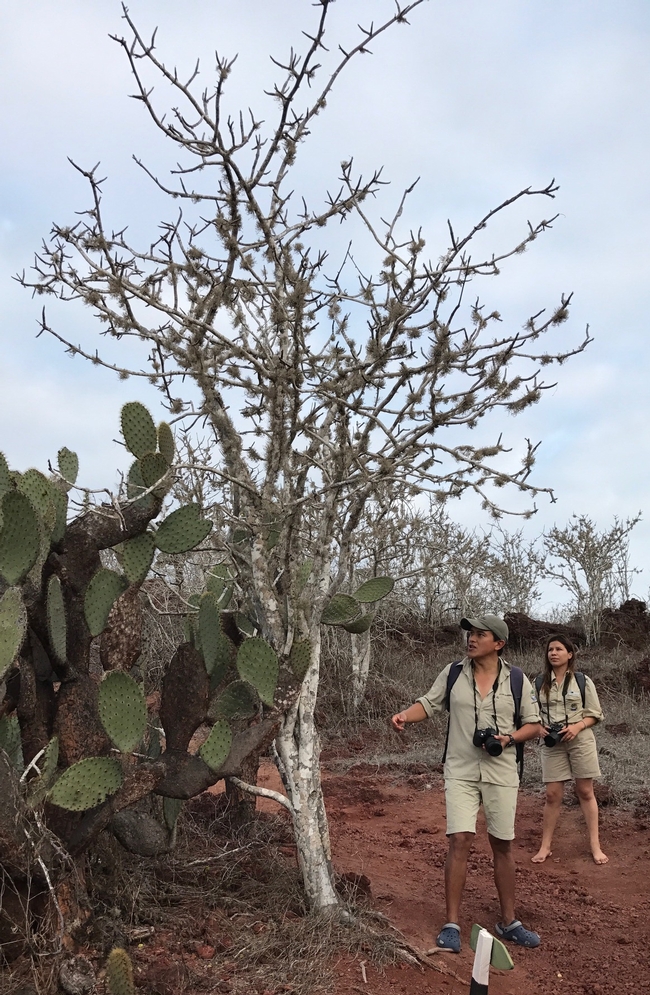
Palo Santo (photos by Karen Metz)
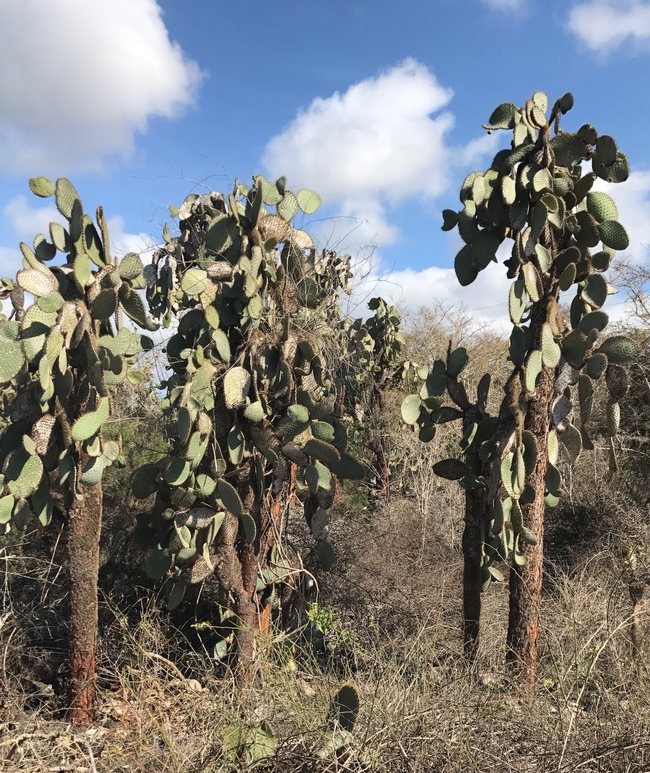
Optunia Santa Cruz
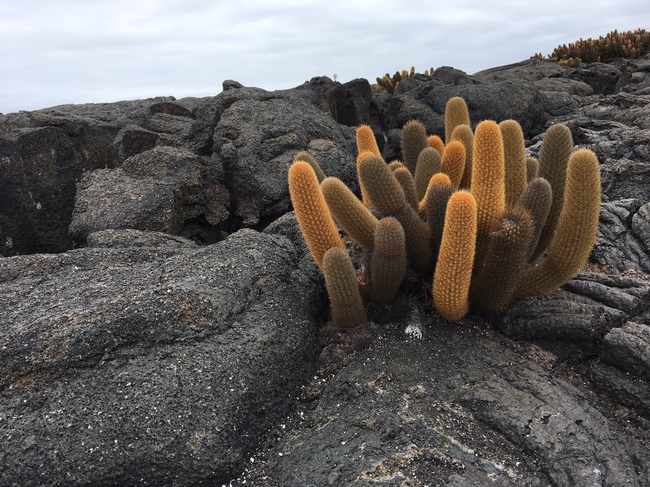
Lava Cactus
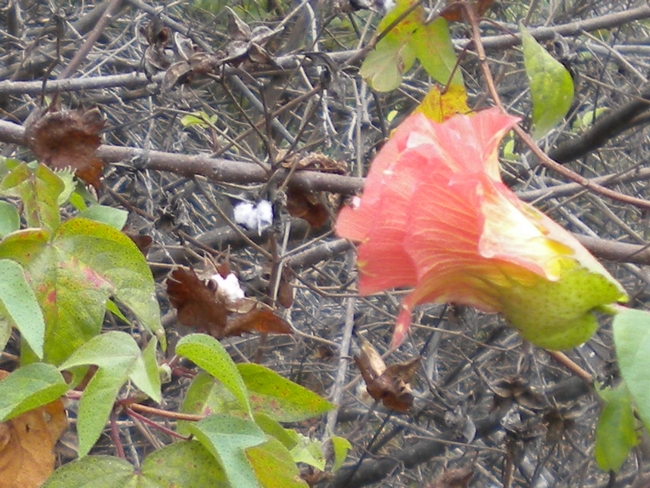
Galapagos Cotton
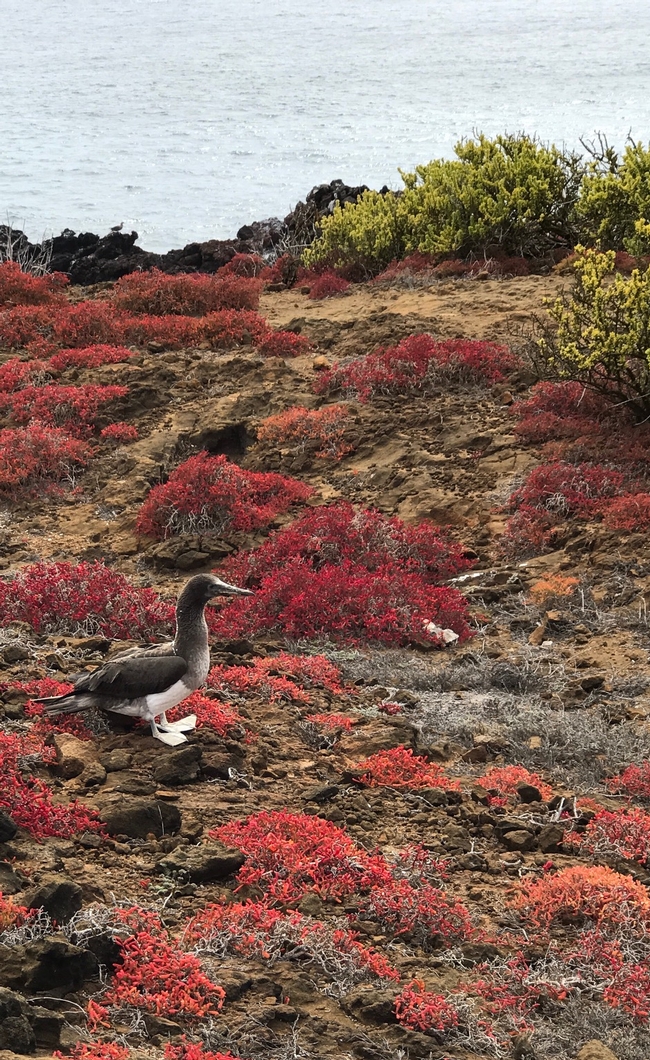
Sesuvium

